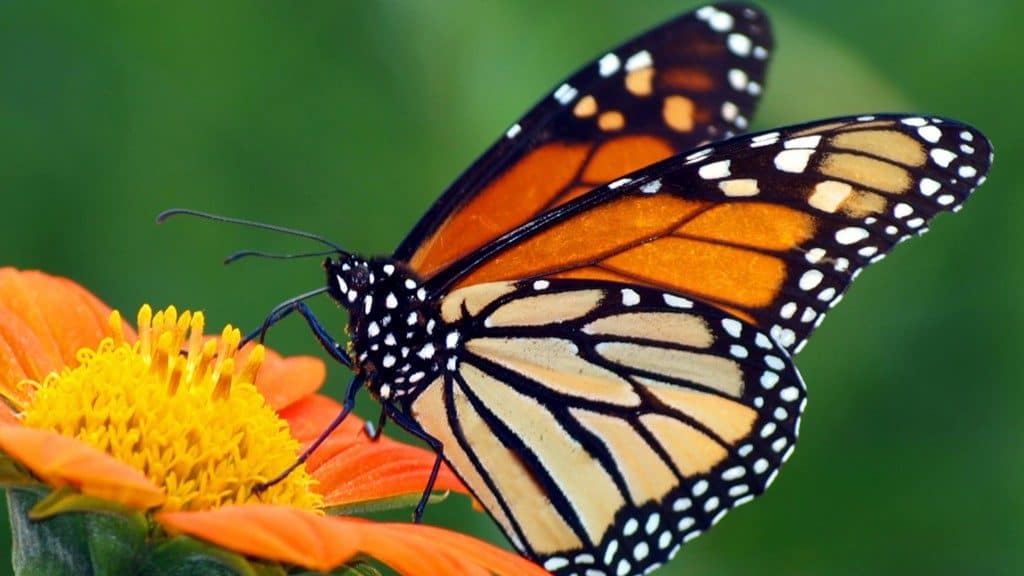
With spring around the corner, I’ve been thinking and worrying about the monarch butterflies and how they’ll make out this year and in years to come. Soon millions of them will leave the oyamel fir forests of Mexico, where they’ve been overwintering in a state of suspended animation, their bodies blanketing the trees.
They’ll fly and glide north toward the Mexican-United States border. Of course, they won’t be stopped and questioned, nor will they be held in captivity while undergoing extreme vetting. Nor will they be wing-cuffed and deported. Nor will they ever have to worry about any super-duper wall humans might decide to erect.
All the monarchs that overwinter in the oyamel forests spend the warm months of the year north of the border. East of the Rocky Mountains and as far north as Canada, they head toward fields of milkweed, the milkweed being the only plant on which they lay their eggs.
They may travel nearly 100 miles a day, their perilous journey taking them as far as 4,000 miles from their wintering grounds. But hey, you do what you’ve got to do to survive. And migrating back and forth every year is what monarchs have done for the past 250,000 years or so.
Though the young monarchs that left New Jersey in the fall of 2016 were migrating for the first time, they knew where to go, just as the ones who will be here soon know where they’re going. Guided by their built-in GPS and with luck on their side, they’ll appear in our yards and parks and fields, and they’ll pollinate our flowering plants as their predecessors did.
But will they be as numerous as last year or the year before? Will they find enough milkweed to meet their needs? Will they encounter friendly environmental conditions, so that their young may develop from egg to larva to pupa to flying adult? And will they mate again and again, producing more young, up to four or five generations during the summer, till the time comes for them to return to their overwintering grounds? If all goes as ordained by nature, the young monarchs of this year’s migrating generation will live through the winter as sexually immature adults and won’t be ready to mate till the spring of 2018.
Monarchs are tough and they’re survivors, but for how long? As a species, they occupy a narrow ecological niche: they can’t survive without milkweed plants and oyamel trees. The milkweed is in diminishing supply, and the oyamel fir forests are precious relics from bygone days when Planet Earth was cooler.
Several studies have shown that 90 percent of the overall monarch butterfly population has vanished in the last 20 years. Given the current political climate of the United States, with a new President who doesn’t give a hoot about the environment, it’s up to us the people to do what we can to protect the monarchs. For starters, we can grow milkweed and other native flowering plants in our yards, we can limit our use of outdoor chemicals and we can impress upon our elected officials that it’s not just a beloved butterfly whose survival is at stake, but the survival of many species, including our own.
The monarchs and many other animal and plant species are canaries in the coalmines. If they die, so will we. It’s only a matter of time.
Monique Begg


